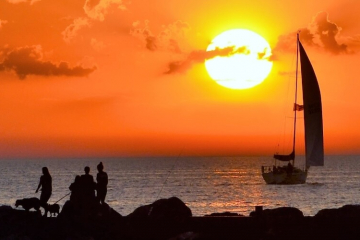The term Ice Saints is used to summarize several days in May when cold air blasts cause frost damage in some regions. “Never plant before the cold Sophia” is a well-known folk saying about the Ice Saints – an important guide for planting, especially for amateur gardeners.
Here is an overview of all the information about Ice Saints, including their names, dates, significance, forecasts and weather.
When are the Ice Saints in 2024?
The Ice Saints in 2024 are in the period from Saturday 11th May to Wednesday 15th May. People often look for the Ice Saints in a particular year. However, the date remains the same every year.
How long do the Ice Saints last?
The Ice Saints last a total of 5 days, from 11th to 15th May. However, there are regional differences. In northern Germany, 11th to 13th May are considered Ice Saint days, according to the German Meteorological Service. In the south and southeast, 14th and 15th May are also included.
Ice Saints 2024: Weather forecast
Almost every year, the weather phenomenon ensures low temperatures in the actual merry month of May. In May, strong air mass changes can often be expected over northern and southern Germany, which can cause night frost and rather cool weather in general.
According to meteorologists, there is actually often frost around the Ice Saint days. Therefore, amateur gardeners should wait before planting sensitive plants. The 2024 Ice Saints could also bring night frosts.
What do the Ice Saints mean?
The Ice Saints are one of the meteorological singularities in Germany. This is understood to mean a weather regularity. It means that it is very likely that a certain weather trend will occur.
In the Middle Ages, it was important for farmers not to sow their crops too early so that the last frost would not destroy the harvest. Around the feast days of the Ice Saints, the weather was considered an indicator of how the next few weeks would go.
What are the names of the ice saints?
The weather saints include Mamertus, Pancras, Servatius, Boniface and Sophia or “cold Sophia”:
- Mamertus – a bishop in Vienne, France (5th century).
- Pancras – a martyr (4th century)
- Servatius – a bishop in Tongeren, Belgium (4th century)
- Boniface – a Sicilian martyr (4th century)
- Sophia / Cold Sophia – a martyr in Rome (2nd century)
In northern Germany, Mamertus, Pancras and Servatius are considered ice saints. In southern and south-eastern Germany, in addition to Pancras and Servatius, Boniface and “Cold Sophia” are also counted among them.
Which folk sayings belong to the Ice Saints?
The weather phenomenon gave rise to folk sayings, such as:
- Before Boniface, no summer; after Sophia, no frost.
- From night frost you are never safe,until Sophia is over.
- Mamertus has a cold heart.
- If it freezes on Pancras,then much of the garden will be ruined.
Other folk sayings and fate days are, for example, the Seven Sleepers Day and the “Schafskälte – mid-June cold snap”.


